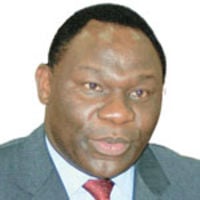Children play at Star of Hope Primary in Lunga Lunga village, Industrial Area Nairobi attends to a student on November 2. Schools reopen on January 4. PHOTO | DENNIS ONSONGO | NMG
SUMMARY
- The debates on Kenya’s educational system might not help us solve the problems the country is facing, with a majority of the youth unemployed.
- To solve these problems, we should strive to invest in learners (students) as much as we invest in product developments.
- But it seems as though we have never come up with the minimum viable learner development as a goal.
Recently I read a tweet by @ValaAfshar, a columnist, on the importance of human-centred capitalism where he cited @AndrewYang Forward as follows: (i) Humanity is more important than money (ii) The unit of economy is each person, not each dollar and (iii) Market exists to serve our common goals and interests.
This made me to reflect on the following: Economy exists because of humanity, and we need to start changing our economy narratives from resources to humanity. As a country with those aged below 35 making up approximately 75 percent of its population, we can only secure Kenya’s future by investing in our youth.
The proper strategy to make this a reality is by making the vision of SDG 4 a reality, which is to: 'Ensure inclusive and equitable quality education and promote lifelong learning opportunities for all'.
The debates on Kenya’s educational system might not help us solve the problems the country is facing, with a majority of the youth unemployed. To solve these problems, we should strive to invest in learners (students) as much as we invest in product developments. But it seems as though we have never come up with the minimum viable learner development as a goal.
We see these problems among the graduates from different institutions of higher learning in Kenya who seem not to meet what the customers (employers) wants. Instead of us coming up with abstract systems, we can adopt ways in which our education system is more of a learning process similar to an approach for helping start-ups develop the sole aim of shortening the learner development cycles. And rapidly build a learning model that is viable.
This can be accomplished using a combination of suggestion-driven testing, iterative learner evaluation by the industry (taking environment into consideration), and validate learning outcomes. It needs an overhaul to match industry needs and the curriculum in higher education institutions (HEIs). It is not rocket science to understand what industry needs today and respond to their requirements through a learning system.
Anyone interested in the youth of Kenya should, for example, peruse through the Malaysian Education Blueprint 2015-2025 (Higher Education). Policymakers in this small country emphasise the importance of advancing university-industry collaboration by allowing the customer to lead curriculum design and delivery through partnership models such as apprenticeships, real-life simulations, and specialised employer training programmes.
When it comes to collaboration, most academics and industry leaders agree that they need each other. They both see numerous advantages, including improved capacity to conduct research and innovation. This can enhance the commercialisation of research to reduce dependence on the government. And the improvements in teaching, learning, and enrichment of students' learning journey to employability, and the provision of new research funding streams to HEIs.
The single exploitable resource in Africa today is the youth. If we developed them as we do with product development, we can rule the world. Even with the advancement of artificial intelligence (AI) and robotics, the world still needs a well trained human resource.
We need no more guessing as to what kind of human resources the world needs today. In the era where data is the new oil and virtually everything, only those who know how to mine it will create wealth from it. There isn’t any discipline today that does not require data or some emerging technology. We simply need to digitalise everything that can be digitalised. With numbers, we can measure progress.
We have partly failed to develop creative ways of funding higher education because we often think that the students are the same. Let us develop the wholesome employable youths through creative decentralized means of financing HEIs. By so doing, we shall have a good product and as the Swahili say, Kizuri chajiuza, kibaya cha jitembeza.






No comments :
Post a Comment